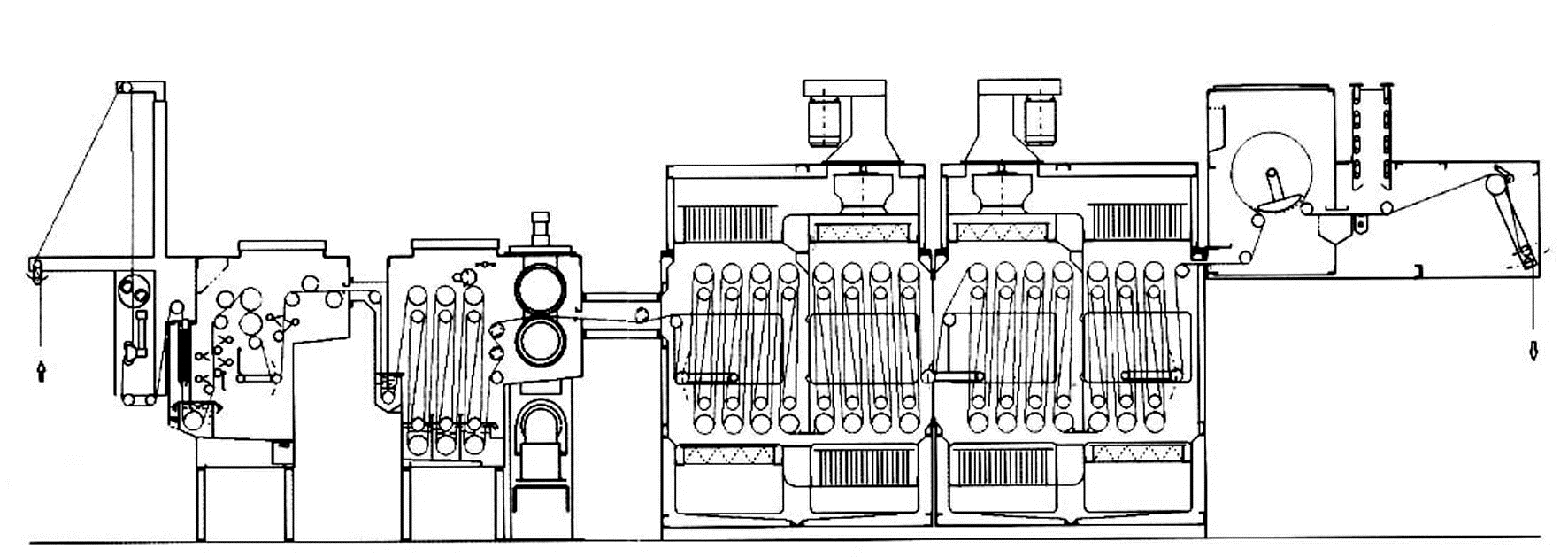Bleaching

Bleaching treatments are applied to eliminate any impurity and obtain a pure white tone, to prepare substrates for low-density dyes or prints and to level off undesired tone variations.
Bleaching agents mainly used for cellulosic fibres are sodium hypochlorite and hydrogen peroxide. They both require the addition of sodium hydroxide in the bleaching liquor to make it alkaline it by favouring the formation of the bleaching ion, which in the first case is the hypochlorite ion and in the second one is the perhydroxyl ion.
When using hypochlorite the pH must range between 9 and 11 and the temperature must not exceed 30° C. In fact, as far as the pH is concerned, pH values below 4 give rise to the formation of chlorine while pH values ranging between 4 and 9 give rise to the formation of
hypochlorous acid: these chemical substances affect the fibre negatively and do not perform a bleaching action.
After the bleaching with hypochlorite it is necessary to carry out an antichlor treatment. Fibres must be treated with hydrogen peroxide, which completely removes the chlorine and avoids the formation of chloramines, which, in drying machines, could generate HCl dangerous for cellulose. With hydrogen peroxide, in the presence of alkali, little motes can be eliminated and the autoclave scouring can be avoided.
The optimum temperature ranges between 80° and 90° C and the pH between 10.7 and 10.9. Hydrogen peroxide at a concentration of 1-2 vol can be used also for silk after degumming, with a pH of 8 9, at 70-80° C for 1-2 hours.
On wool, it is possible to improve whiteness with a bleaching process using hydrogen peroxide, with a vol. range of 1 to 3, stabilised with pyrophosphate with a pH value between 8 and 9, at a temperature of 45-50° C for a time which can vary from 30 minutes to 3-4 hours. In alternative, it is possible to carry out a treatment with a pH value of 3-4, in acid environment for HCOOH at ambient temperature; in this case, the formic acid reacts with peroxide, generating performic acid, which carries out the bleaching action. This method slightly damages the wool but gives good results.
From an environmental point of view, hydrogen peroxide is more suitable than hypochlorite since it has a lower impact on the environment and effluents can be decontaminated with simpler operations.
Here is recommended to add a
ROTOSPRAY for bleaching fabric.
Another bleaching agent used in textile processing is sodium chloride (suitable for synthetic fibres) that takes advantage of the oxidising action of chlorine dioxide generated as a result of the hot acidification of the solution of this salt. Unfortunately, chlorine dioxide is a toxic
substance and attacks stainless steels;
therefore it is necessary to work in hermetically closed units equipped with suction systems with resistant materials such as stoneware.
Bleaching operations can be carried out on yarns, fabrics and knitting with continuous and discontinuous process in circulating liquor machines (autoclaves, jigger, paddle wheel, jet, overflow), semi-continuous (pad-batch, pad-roll).
Continuous bleaching can be carried out on knitted fabrics using a
ROTOPLASMA Machine .
The products to be used on the fabric are applied by means of suitably positioned mangles; the fabric is introduced in the machine where it remains for the time necessary to complete the bleaching process.
Temperature, speed, pressure and pH are controlled automatically.
It is also possible to carry out optical bleaching using substances that do not perform a chemical action on the fibre but obtain a whitening effect by means of an optical compensation process of physical nature.
These substances release a blue light compensating white and grey, and giving a dazzling white effect. For example an optical bleaching on wool can be carried out after chemical bleaching, using 0,2-0,6 g/l optical bleaching agent at pH 4-5 for acetic acid, at a
temperature of 50-60 ° C for 30 minutes.